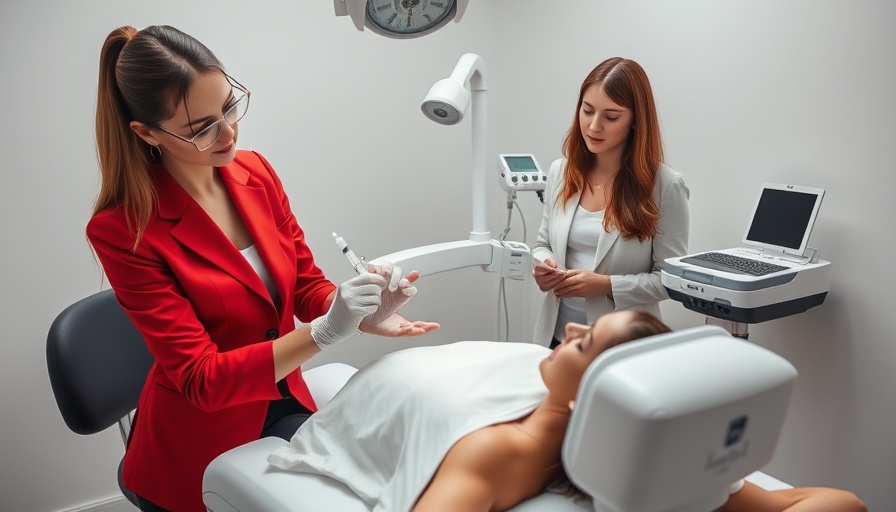
Transforming Aesthetics: A Bold New Era in the UK
The UK aesthetics industry is on the brink of significant transformation. With burgeoning demand for non-surgical cosmetic procedures paired with minimal regulatory oversight over the years, practitioners and patients alike found themselves in a confusing landscape where standards were inconsistent. Yet, an imminent change is upon us, led by the Department of Health and Social Care (DHSC) and the Joint Council for Cosmetic Practitioners (JCCP). This new era will not only prioritize patient safety but also redefine the responsibilities of practitioners.
The Urgency of Regulation: Why Now?
The DHSC has officially recognized the pressing need for comprehensive regulation in cosmetic procedures across the UK. The rising popularity of treatments like dermal fillers, botox injections, and skin boosters has highlighted gaps in existing frameworks, creating uncertainty for patients regarding the qualifications of their providers. This moment of recognition signals a pivotal shift toward institutional structure, aiming to restore patient confidence and ensure enhanced treatment standards.
What Regulation Means for Patients and Practitioners
For patients, the introduction of rigorous regulatory measures promises a landscape where safety is prioritized. With proper oversight, individuals can seek treatments with greater assurance regarding the competence of their practitioners. Simultaneously, practitioners will embrace newly defined roles and responsibilities, evolving into a more structured profession as they adapt to new certification requirements set forth by the JCCP in collaboration with the government.
Key Changes to Aesthetics Certification
As the JCCP spearheads these reforms, the focus will be on establishing a systematic certification pathway for both newcomers and seasoned clinicians. This pathway aims to mitigate previous challenges by ensuring that all individuals delivering aesthetic treatments are thoroughly trained and adequately certified. Leading training organizations are pivotal in this transition, equipping practitioners with the required knowledge and portfolio through enhanced training programs and clinical practice.
The Role of Training Providers
Transformative changes will only occur if training providers evolve as well. Organizations like Acquisition Aesthetics are already stepping up, offering advanced courses that meet the new regulatory standards. This proactive approach ensures practitioners are not just compliant but are also equipped with the skills and knowledge necessary to excel in their practices. Continuing Professional Development (CPD) approved programs play a crucial role and allow clinicians to remain updated on best practices as procedures evolve.
Addressing Long-Standing Concerns Around Patient Safety
The transition towards regulated aesthetics is a long-awaited solution to pressing patient concerns. Industry knowledge has long called for the establishment of consistent certification requirements that would ensure individuals receiving treatment could trust in their provider’s qualifications. Enhanced regulation will enable the establishment of clear best practices and accountability measures, fostering an environment where patient welfare is the guiding principle.
The Future is Bright: What Lies Ahead?
With these changes, the aesthetics industry in the UK is poised to enter an exciting and safer future. Practitioners can take this as an opportunity to enhance their skills and offerings, ultimately benefiting their practices and, more importantly, their clients. As patient awareness and expectations rise, practitioners will need to be adaptable and responsive to these emerging changes.
In summary, the introduction of structured certification and regulation within the UK aesthetics industry stands as a significant milestone. This transformation promises a safer, more standardized environment for clinical excellence. For practitioners, adapting to these changes will not only elevate their professional standards but also enhance overall patient care. As the industry evolves, staying informed and engaged can empower both parties for a thriving future in aesthetics.
As we navigate this exciting period for the aesthetics industry, practitioners are encouraged to familiarize themselves with the upcoming changes and explore relevant training opportunities. By investing time in understanding these transformations, they can ensure compliance and embrace the new opportunities this evolving landscape presents.
 Add Row
Add Row  Add
Add 




Write A Comment